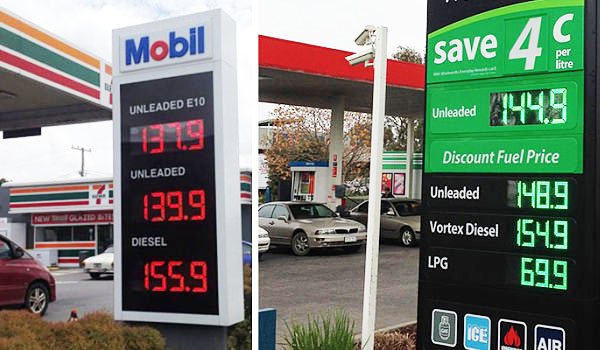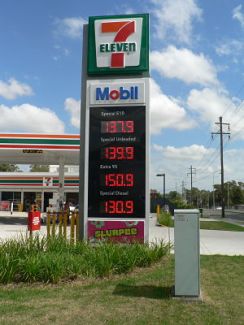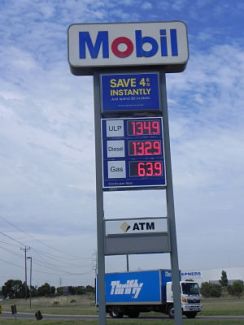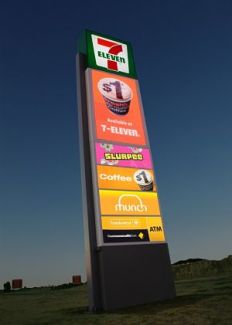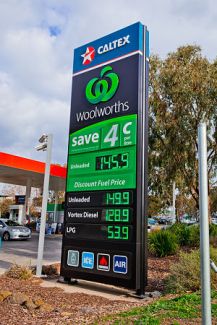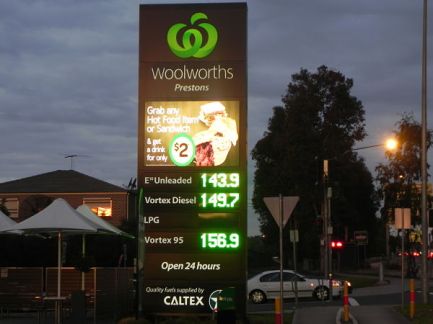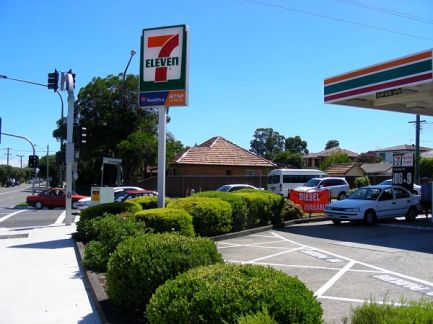 An interview with Gary Fulton, managing director of Metro Signs
An interview with Gary Fulton, managing director of Metro Signs
This year Metro Signs celebrates 25 years in business, so C&I Week caught up with Gary Fulton, Metro Sign’s managing director, to talk about how the company and the signage industry has changed.
Tell us about your early career
I started in the sign industry in 1974. By the time I started Metro Signs, in 1991, I had been in the industry for about 17 years. We started Metro Signs with a vision of being not the biggest, but the best sign company in Australia. That’s something we are always working to.
In the P&C channel 7-Eleven has been one of your major clients, how long have you been working with the convenience chain?
We got involved with 7-Eleven when they were first starting out in Australia and were still importing all their signage from the US. We thought up a new way of building their signs here in Australia, and it was better than what they were importing. We have worked with them ever since. That’s 25 years.
In the early days we supplied all their signage needs, and sometimes even a bit more; we supplied their rubbish bins and telephone domes for a while. But the main things we did were their canopies, fascias, internal stripes and window stripes. We were an integral supplier and manufacturer for 7-Eleven in those days.
Today our clients in the petrol and convenience channel also include Caltex/Woolworths Petrol, Budget and other independent fuel retailers.

Looking back to 1991, how has Metro Signs changed over time?
We started out in a very humble 7000sqf tin shed, an ex-railway shed, in West Melbourne (then known as South Kensington).
Then, about eight years ago we moved to a new facility in Epping, Victoria. In October last year we opened an office-warehouse in Lane Cove, NSW.
The last 10 years in particular we have been growing. We have probably quadrupled ever since we moved to Epping because we have very large manufacturing facilities which are specifically built to make very large signs.
All of our signs are still manufactured and assembled in Australia. We’ve got a workforce of between 40 and 50 staff. We coordinate the installations and have installers in every state and regional centres across the nation. We deliver, install, connect, and remove – it’s a full service.
These days we do tend to specialise more in large runs and larger sign types. But we do always have situations where we need to customise for a particular site.
What have been the biggest changes to the industry over the past 25 years?
Technology is a big aspect of signage now. In the old days we had the sign writers, writing with their hands shaking at 7 in the morning, then we went through a period of computers and large format printers and now of course we have progressed to technologies like routing and laser cutting for sign fabrication.
Going back 25 years ago our workforce would have been between 200 and 250, not the 50 we have today, that’s down to technological advances. The machinery is quite expensive to set up and you do still have a lot of labour but you need skill sets of welding, folding, bending and fabricating, whereas the old machine spat out letters and you would go and stick them on the wall – anyone just about could do that.
Of course, we are still using machines to cut out lettering but we are also using machines to run bends and folds and welds. The assembly process is a very important part of the process to make sure you get a good quality finish.
What does the future hold for signage?
Digital screens are definitely the future of signage; and if you are not in the digital space now, it’s probably going to be a missed opportunity. Digital will be the accepted standard within the next five years.
We have introduced signs that can recognise people’s faces and vehicle number plates, but while retailers in the fuel space are talking about digital signage and its potential, some still tend to be fairly conservative.
There are systems with cameras that can recognise a returning customer. This provides retailers with the opportunity to use data such as sex, age and purchasing habits to tailor their offer to the customer. For example, in a fast food environment, menus can change to show the customer’s regular purchase items or to offer relevant specials.
However, there are still concerns when it comes to new technologies particularly around face recognition. There are other sources you can use to identify customers, for example the serial numbers of mobile phones. While that doesn’t provide you with information such as gender or age, it does let you know store traffic patterns, when particular customers are coming into your stores, or how long they are in store. That type of technology can also count the number of cars that drive past your store so you get road counts.
We have recently manufactured pylon signs that have LED screens in them. We have around 20 of these signs currently being installed across the country for Subaru. The signs allow Subaru to update their ads and we’ve also implemented touch screens so signage can be changed in the car sales room; staff can select colours, wheel trims, tyres and so on. There are other developments on the way too.
We’ve also done a few of these signs for selected 7-Eleven stores such as Aredder in Victoria and Pheasants Nest in NSW, plus a few other trial sites.
It is such an exciting industry; it’s always changing and growing and, although it is sometimes frustrating, I reckon everyone should be in the sign industry.
Metro Signs will be exhibiting at the C&I Expo in Melbourne on August 17 and 18, 2016.
Retailers wishing to view the latest convenience products can register for free entry to the C&I Expo which will run from 12pm to 5pm on Wednesday, August 17 and Thursday, August 18 at Melbourne Exhibition and Conference Centre.
Sign up to C&I’s weekly newsletter here to receive the latest industry news every Thursday. Follow C&I on Facebook, Twitter and Linkedin.

